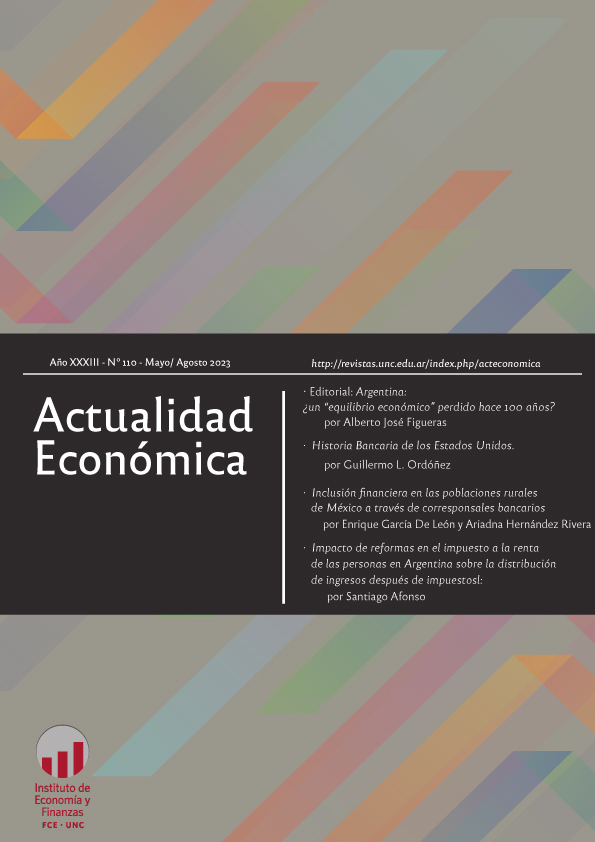Banking History of the United States. Two centuries of lessons on money and crisis
Keywords:
Banking History, United States, Banking CrisesAbstract
Two centuries of evolution in the American banking system offer valuable insights into the money created by banks, its role as a means of payment, and its fragility. This article encapsulates this historical journey, focusing on the significant impact that bank opacity and government guarantees appear to have on the efficiency and stability of banks and payment methods.
Downloads
References
Anderson, Haelim, Selman Erol, and Guillermo Ordoñez. (2022). “Interbank Networks in the Shadows of the Federal Reserve Act.” NBER Working Paper 27721.
Gorton, Gary (1985), “Clearinghouses and the Origin of Central Banking in the United States” Journal of Economic History 45, pp 277–83.
Gorton, Gary (2013). “The development of opacity in U.S. banking.” NBER Working Paper 19540.
Gorton, Gary and Guillermo Ordoñez. (2022) “The supply and demand for safe assets.” Journal of Monetary Economics, 125: pp 132–147.
Gorton, Gary and Guillermo Ordoñez. (2023) Macroeconomics and Financial Crises: Bound Together by Information Dynamics. Princeton University Press, Princeton, 2023
Moen, Jon and Ellis Tallman. (1992). “The Bank Panic of 1907: the Role of Trust Companies.” Journal of Economic History 52: pp 611-30.
Moen, Jon and Ellis Tallman. (2000): “Clearinghouse Membership and Deposit Contraction during the Panic of 1907.” Journal of Economic History 60: pp 145-63.
Rockoff, Hugh (1974). “Free banking era: A reexamination.” Journal of Money, Credit and Banking, 6, pp 141–167.
Rolnick, Arthur and Warren Weber. “New evidence on the free banking era”. American Economic Review, 73(5): pp 1080–1091.
Sanches, Daniel (2016). “The free-banking era: A lesson for today?” Economic Insights - Federal Reserve Bank of Philadelphia, Third Quarter: 9–14.
Downloads
Published
Issue
Section
License

This work is licensed under a Creative Commons Attribution-NonCommercial-NoDerivatives 4.0 International License.
Those authors who have published with this journal, accept the following terms:
Authors will conserve their copyright and guarantee the magazine the right of first publication of their work, which will be simultaneously subject to the Creative Commons Attribution-NonCommercial-NoDerivative 4.0 International License that allows third parties to share the work as long as the author and first publication of this magazine are indicated.
Authors may adopt other non-exclusive license agreements to distribute the published version of the work (e.g., deposit it in an institutional telematic archive or publish it in a monographic volume) provided that the initial publication in this journal is indicated.
Authors are allowed and encouraged to disseminate their work through the Internet (e.g., in institutional telematic archives or on their website) before and during the submission process, which may lead to interesting exchanges and increase citations of the published work. (See The effect of open access)









